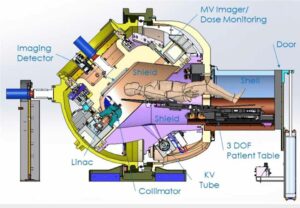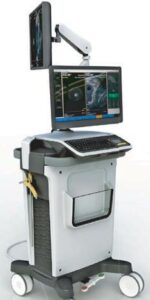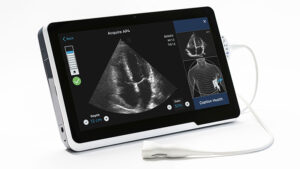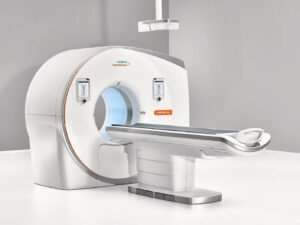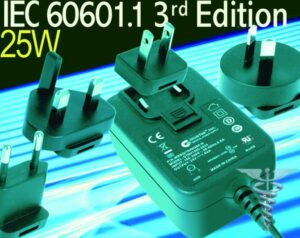
NMPA released “Quality Management Measures for Medical Device Operations”, on December 7, 2023, effective July 1, 2024. The previous version published in 2014 was obsoleted.
By the end of November 2023, the number of medical device suppliers nationwide had nearly tripled compared to those in 2014. New policies, including centralized procurement of high-value medical consumables and the unique identification system, have been introduced. New trends such as internet sales, third-party logistics, and innovative medical consumables supply chain have emerged. The new GSP adjusts to these changes.
Main Revisions
The main revisions in the new GSP include:
- Addressing difficulties in implementing and interpreting ambiguous clauses in the 2014 version
- Identifying and supplementing new regulatory elements
Such as requirements for medical device unique identification in product acceptance, outbound verification, and computer system usage. The document clarifies that electronic certificates have legal equivalence to paper certificates, encouraging the use of information technology for transmitting and storing electronic certificate data.
- Enhancing blind spots in operational processes
Such as incorporating new content on automated vending machine quality management, collaborative management in multiple warehouses, direct adjustment quality management, and post-clinical confirmation product sales management, etc.
Key Highlights in the New GSP
The GSP regulates the following new trends:
- Automated Vending Machine
The document clearly outlines automated vending machines as an extension of medical device retail operations. Specific requirements are established for the operators, placement, quantity, functionality, internal display environment, post-sales mechanisms, storage and dispensing, regular inspections, and issuance of sales receipts for automated vending machines.
- Multi-Warehouse Collaboration
It specifies that companies can set up warehouses across administrative regions and entrust specialized enterprises to provide medical device transportation and storage services across regions, forming a nationwide or regional multi-warehouse collaborative logistics management model. Companies are required to strengthen quality management, equip themselves with computer information systems capable of real-time interaction on storage and inventory data with the operating headquarters.
- Direct Shipping Operation
For special circumstances such as disasters, epidemics, emergencies, clinical urgent treatment, or the operation of large medical equipment like MRI and CT, a direct shipping method can be adopted. Before purchasing or selling, companies must audit the qualifications and legality of suppliers, buyers, and the products. A dedicated record for direct procurement should be established to ensure quality tracking and traceability.
Companies should store products based on the quality characteristics of medical devices. For instance, when storing in a cold storage facility, a reasonable storage area should be determined based on the cold storage validation report, and the air outlet of the refrigeration unit should be kept unobstructed. When handling, stacking, and placing medical devices, operations should comply with packaging label requirements. The stacking height, placement direction, and compliance with shelf and pallet load ranges should be adhered to, preventing damage to medical devices. Combined storage of medical and non-medical devices is allowed, but in automated warehouses, medical and non-medical devices can be stored separately by storage location. When storing non-medical products in warehouses, proper zoning management should be implemented, considering pollution risks to the storage environment and personnel.
- Shipping Order
Shipping order should include details such as the supplier‘s name, medical device registrant, filer, and entrusted manufacturing enterprise name, device name, model, specifications, registration or filing numbers, production batch or serial numbers, expiration date, quantity, transportation and storage conditions, name of the specialized enterprise providing transportation and storage services (if applicable), receiving unit name, address, contact information, shipping date, etc. In the case of direct shipping and sales, the supplying entity must issue two accompanying documents, one for the direct adjustment enterprise and the other for the buyer.
- Transportation Process Records
Companies should choose appropriate transportation tools and routes, ensure product protection during transportation, and record transportation details. These records should include information such as the receiving unit’s name, address, contact information, transportation method, medical device name, model, specifications, registration or filing numbers, batch or serial numbers, units, quantity, shipping date, etc. When outsourcing transportation, details such as the carrier’s name and waybill number should be recorded. If self-transporting, the vehicle license plate number and transportation personnel information should be recorded.
- After-Sales Service
Companies can provide after-sales technical services themselves or rely on suppliers or third-party organizations. When using third-party organizations, it is essential to select service providers with quality assurance capabilities, sign written quality assurance agreements, define the quality responsibilities and obligations of both parties, and specify the service scope and quality management requirements for after-sales services. Companies should conduct regular assessments of service providers to ensure the quality, safety, and traceability of the after-sales service process.
- SEO Powered Content & PR Distribution. Get Amplified Today.
- PlatoData.Network Vertical Generative Ai. Empower Yourself. Access Here.
- PlatoAiStream. Web3 Intelligence. Knowledge Amplified. Access Here.
- PlatoESG. Carbon, CleanTech, Energy, Environment, Solar, Waste Management. Access Here.
- PlatoHealth. Biotech and Clinical Trials Intelligence. Access Here.
- Source: https://chinameddevice.com/china-gsp/
- :is
- $UP
- 1
- 2014
- 2023
- 2024
- 7
- a
- acceptance
- across
- address
- adhered
- Adjustment
- adjusts
- administrative
- adopted
- agreements
- AIR
- allowed
- an
- and
- announced
- applicable
- appropriate
- ARE
- AREA
- AS
- assessments
- assurance
- audit
- Automated
- based
- BE
- been
- before
- blind
- both
- both parties
- but
- BUYER..
- buyers
- by
- CAN
- capabilities
- capable
- case
- centralized
- certificate
- certificates
- chain
- Changes
- characteristics
- Choose
- circumstances
- clearly
- Clinical
- cold
- Cold Storage
- collaborative
- combined
- Companies
- compared
- compliance
- comply
- computer
- conditions
- Conduct
- confirmation
- considering
- contact
- content
- damage
- data
- Date
- December
- dedicated
- define
- details
- determined
- device
- Devices
- difficulties
- direct
- direction
- disasters
- Display
- document
- documents
- during
- Effective
- Electronic
- emerged
- encouraging
- end
- ensure
- Enterprise
- enterprises
- entity
- entrusted
- Environment
- Epidemics
- equipment
- equivalence
- essential
- established
- etc
- expiration
- extension
- Facility
- Filing
- following
- For
- functionality
- had
- Handling
- Have
- Headquarters
- height
- highlights
- HTTPS
- Identification
- if
- implemented
- implementing
- in
- include
- Including
- incorporating
- information
- Information Systems
- information technology
- innovative
- instance
- interaction
- internal
- Internet
- introduced
- inventory
- inventory data
- issuance
- issue
- IT
- jpg
- July
- kept
- Label
- large
- Legal
- License
- like
- load
- location
- logistics
- machine
- Machines
- Main
- management
- manufacturing
- measures
- mechanisms
- medical
- medical device
- medical devices
- medical equipment
- method
- model
- MRI
- multiple
- must
- name
- Nationwide
- nearly
- New
- November
- number
- numbers
- obligations
- of
- on
- ONE
- operating
- operation
- operational
- Operations
- operators
- or
- order
- organizations
- Other
- outlet
- outlines
- Outsourcing
- packaging
- Paper
- parties
- Personnel
- placement
- placing
- plato
- Plato Data Intelligence
- PlatoData
- policies
- Pollution
- preventing
- previous
- process
- procurement
- Product
- Production
- Products
- proper
- protection
- provide
- providers
- providing
- published
- purchasing
- qualifications
- quality
- quantity
- ranges
- real-time
- reasonable
- receipts
- receiving
- record
- recorded
- records
- regional
- regions
- Registration
- regular
- regulatory
- released
- rely
- report
- required
- Requirements
- responsibilities
- retail
- revisions
- risks
- routes
- Safety
- sales
- scope
- select
- Selling
- serial
- service
- service providers
- Services
- set
- Shelf
- Shipping
- should
- sign
- special
- specialized
- specific
- specifications
- spots
- stacking
- storage
- store
- stored
- Strengthen
- such
- suppliers
- supply
- supply chain
- supplying
- system
- Systems
- Technical
- Technology
- that
- The
- themselves
- These
- third-party
- those
- to
- tools
- Traceability
- Tracking
- transportation
- treatment
- Trends
- two
- unique
- unit
- units
- urgent
- Usage
- use
- using
- validation
- vehicle
- vending machines
- Verification
- version
- was
- when
- with
- written
- zephyrnet


